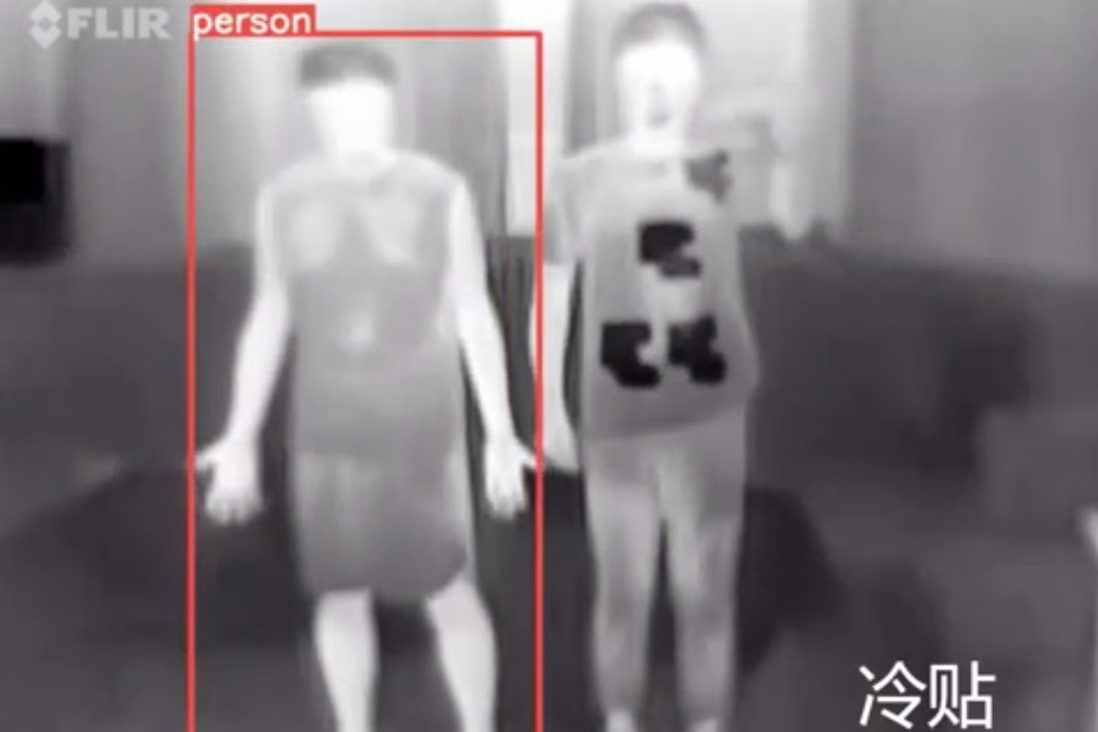A group of students successfully created a ‘invisibility cloak’ that can ‘cover the eyes’ of security cameras using AI
- Tram Ho
A group of students in China has invented a ‘stealth’ cloak that hides the human body, day and night, from AI-monitored security cameras. Notably, this gown has a simple design, low production cost, but surprisingly good performance.
It is known that the project is guided by Professor Wang Zheng, currently working at Wuhan University. The paper describing the team’s invention was accepted by AAAI 2023, a leading academic conference on artificial intelligence.
According to SCMP, the group’s product also won the first prize in an innovation contest on November 27 sponsored by Huawei technology group.
Called InvisDefense, the cloak is still visible to the human eye. However, it is covered with a pattern that ‘blinds’ the camera during the day and emits unusual heat signals at night, according to the team.

InvisDefense has used an algorithm to create a camouflage pattern that is most visible to the human eye but can still fool security cameras into not identifying the wearer.
” Nowadays, many surveillance devices can detect human body. Security cameras on the road have the function of detecting pedestrians, while smart cameras integrated in cars can identify pedestrians, Our InvisDefense cloak allows the camera to capture you, but it can’t determine if you’re human ,” Wang said.
During the day, the camera usually detects the human body through motion recognition and contour recognition. However, with specially designed camouflage patterns on the surface, InvisDefense can interfere with the camera’s visual recognition algorithm, effectively blinding the device so that it cannot identify the wearer. cloak is human.
At night, the camera tracks the human body through infrared thermal imaging. In response, irregularly shaped temperature control modules located on the inner surface of InvisDefense create an irregular temperature pattern that confuses infrared cameras
“The hardest part was [creating] the balance of the camouflage pattern. Traditionally, researchers used luminance images to interfere with machine vision, and it was pretty effective. But it’s popular. pops up in front of human eyes, making us even more visible ,” said Wei Hui, a doctoral student in the team responsible for the core algorithm.
” We use algorithms to design the least noticeable patterns that can disable computer vision .”
To do this, the team ran hundreds of tests over three months before finding the best pattern.
Another advantage of InvisDefense is its very low production cost. It is relatively inexpensive to print a pattern on a fabric surface, and only four temperature control modules are needed to blind the infrared camera.
” The cost of a complete set of InvisDefense is less than 500 yuan (US$70 ,” said Mr. Wang.
” This is the first product in the industry that can evade the detection of public pedestrian surveillance cameras, while not causing suspicion from the human eye. Through on-campus testing, the accuracy of Pedestrian detection cameras could be reduced by 57% – this number could be even higher in the future”
“Our results demonstrate that, while there are still gaps in artificial intelligence and computer recognition technologies, researchers can use our algorithms to improve models. present .”
” InvisDefense can also be used in the fight against drones or in human-machine confrontations on the battlefield ,” Wang concluded.
Refer to SCMP
Source : Genk
